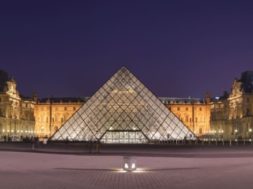Paris has it all. Few cities on this Earth are as dramatic and iconic as the capital of France. If you were to circle the globe and make a list of its most beautiful cities, Paris, with its unique monuments and charming streets, would always make it into the top ten.
Since the Age of Enlightenment, Paris, the City of Light, has been attracting fashionistas, artists, history buffs, and writers, all of whom are inspired by the bohemian culture and the abundance of museums and grand boulevards. Paris is like no other place on earth. To quote Owen Wilson, “… from way out in space you can see these lights, the cafés, people drinking and singing. For all we know, Paris is the hottest spot in the universe.”
The unique heartbeat of Paris casts a spell on the hearts and minds of those who have ventured to this dramatic city. Even travel writers fall under the allure of the tangled streets, outdoor cafés and inspiring boat cruises along the Seine. With its Champs-Élysées and Place des Vosges, Latin Quarter and Montmartre, Paris is the original model for other major world capitals, all claiming their own prototype of grand elegance and sophistication.
But where do you begin? Whether this is your first time, or your next time, there is so much to see and experience you likely will find yourself bedazzled and even a bit overwhelmed. Start with these top six iconic attractions: two museums, two monuments and two churches. Plan to travel about on the Seine, whenever possible, using the fun little Batobus, with its glass roof and convenient range of stops at most of your top-pick attractions. This will make the getting there as much a part of your travel adventure as the arriving.
Two Museums: Louvre & Orsay
You likely already know which two museums to put at the top of your “to do” list for any trip to Paris: the Louvre and the Orsay. Even if you already have visited these museums on past trips, do return to them again this time, and every time, you are in the city. Show some mercy to yourself though, and plan to visit only one of these colossal edifices per day.
The Louvre. There’s not much that compares to the Louvre. Even walking into the courtyard will elicit a gasp as you face I. M. Pei’s grand pyramid of glass. Photos simply do not do it justice. The pyramid stands as a puzzling backdrop to the half-sized version of the Arc de Triomphe, a companion piece to Napoleon’s other arch at the opposite end of the Voie Triomphale (the “Triumphal View”). This smaller arch is topped with the bronze horse-drawn chariot from Saint Mark’s Cathedral in Venice that Napoleon pilfered in 1798 (the chariot has now been returned to its rightful home and replaced with a copy). As you stand in this courtyard, the vast building that surrounds you dates from old to older, containing a 12th-century castle fortress within a 16th-century palace.
To reach the Louvre, take the Batobus and hop off at the Louvre stop. Look across to the other side of the river for a stunning view of the Orsay, the former train station, now turned art museum, that you will be visiting on another day. Have a solid plan before you enter the Louvre through the pyramid. And, certainly, have a pre-purchased Paris Museum Card so you can skip the lines.
As you walk this former palace, you will be following in the footsteps of the Kings who roamed these same halls and galleries, reveling in their priceless collections of paintings and sculpture. Look around, up, down and out the windows at the lavish palace itself, as well as at the artwork it contains.
Save time during your visit for Winged Victory, the Mona Lisa, Venus du Milo, and the Gallery of Apollo (where the Sun King, Louis XIV, held audiences). Visit the Salle des Caryatides to see the Roman copies of Greek sculptures collected by the French royals, including four Caryatides, female forms that serve as columns, balancing the musicians’ gallery atop their heads. Locate the subterranean medieval tower and moat from King Philippe’s 12th-century fortress. These ruins were uncovered during the archeological dig to remove and preserve matchless artifacts prior to the construction of the pyramid.
Stand in the glass-roofed, sun-lit, Marly Courtyard, with the magnificent and powerful Marly horses and other sculptures from the gardens of Château de Marly, the country palace on the Seine where the Sun King entertained his close acquaintances towards the end of his reign. Stop for a break at the Café on the landing of the Mollien Staircase. Sit on the terrace overlooking the Napoleon Courtyard and the pyramid.
The Orsay. As essential as it is for you to visit the Louvre, it may be even more important to reserve ample time to explore the Orsay. The collections here are so stunning they will imprint themselves on your mind for all time. As you wander this vast former train station, built to impress the masses of visitors who flocked to the city for the 1900 Paris World’s Fair, you will pass through room after room of priceless artwork by iconic Impressionists like Monet, Renoir, van Gogh, Dégas, Cézanne and Toulouse-Lautrec. Exquisite sculptures are spread about at the level of the former train tracks and on the balconies, now sculpture terraces, where travelers once stood to await their trains.
Just inside the entrance to the museum is a 1/16-scale model of the Statue of Liberty that was gifted by France to the US in 1876 to honor the centennial of American independence. Plan ahead (and make reservations) to eat lunch in the former dining room of the turn-of-the-century Grand Hotel that once adjoined the train station.
Two Monuments: Tower & Arch
Of course, any trip to Paris must include visits to the Eiffel Tower and the Arc de Triomphe. These are the quintessential Parisian monuments, one built as the entrance to the 1889 Paris Exposition Universelle, and the other designed to glorify Napoleon, and commemorate his victories. From atop each of these, you will have glorious views out across the city.
Eiffel Tower. Make your reservations to the Eiffel Tower well before your visit to ensure yourself entry at a specific time. Consider making a wonderful splurge by combining your tower visit with either lunch or dinner at the 58 Tour Eiffel Restaurant on the 2nd level. While you are on the 1st level, walk out onto the glass floor and look down, if you dare. Ask someone to snap your picture as proof.
If you do take the elevator all the way to the top, pause for a glass of champagne as you look out across Paris from what was the tallest building in the world for over 40 years. If you feel the tower swaying slightly in the wind, you will have even more of a story to tell once you return home.
Arc de Triomphe. At the Arc de Triomphe, take the tunnel under the frenzy of traffic circling the monument, and spend some time reading the inscriptions. Possibly climb the 284 steps to the top for another unsurpassed view across Paris. Even better, climb to the top at night to experience Paris aglow.
From your vantage point atop this triumphal arch, look back along the Voie Triomphale to the smaller arch in the courtyard outside the Louvre where you stood earlier. This will provide you some perspective of the magnitude of Napoleon’s self-admiration. Look up towards Sacré Coeur Basilica in Montmartre, perched high on its hill overlooking Paris. Gaze out along the Champs-Élysées, with its dazzle of shops and shoppers. If you are so inclined, use this opportunity to spot a few prime fashion emporiums and make a side visit to them later to see what you can find.
Two Churches: Notre Dame & Saint-Chapelle
Finally, on your list of “must visits” are two churches, a cathedral and a chapel, both located on the larger island in the Seine, Ile de la Cité. This island is where the Parisii first settled in the 3rd century BC, giving the Paris its name. Two centuries later, in 55 BC, the Romans destroyed and sacked the Parisii settlement, then rebuilt the town to their own design, complete with Temple, Colosseum, Forum and Roman Baths.
Notre Dame. The first of these necessary visits is to Notre Dame, built on the site of an ancient Roman temple. This massive architectural masterpiece took over 200 years to construct, beginning in 1160, and has stood all these many centuries despite revolutions and wars, neglect and renovations. Now it has been grievously damaged by a tragic fire that brought its spire crashing down onto its already flaming roof.
Notre Dame remains majestic even in its compromised state. It will be years before visitors can once again walk inside to sit peacefully, gazing up at the rose window. For now, you only will be able to view it from the front, back, and each side. Give yourself some time with this remarkable edifice. Cross the bridge to the Left Bank and find a floating boat-bar moored along the quai. Select a table beside the handrail and order a glass of wine. As you look across the river at Notre Dame, marvel at its remarkable life story, from its construction during the Middle Ages, before the benefits of modern tools and technologies, through to its rescue from total destruction by the 400 fire fighters who flocked here to save it from the blaze.
Sainte-Chapelle. Saving one of the best for last, walk to the opposite end of the island from Notre Dame to sit awhile in the ethereal Sainte-Chapelle, hailed as one of the greatest architectural masterpieces of the Western world. Worshipers in the Middle Ages considered this chapel to be a “gateway to heaven.” Surrounded on all sides by some of the loveliest stained-glass in all the world, amazingly preserved for over 770 years, you will be bedazzled by the intensity of the color and light. If you can arrange tickets for a concert in this exquisite setting, do so. You will remember this for life.
Now you have made a good beginning in Paris. But there is more, much more. Paris is a city to which you will need to return over and over again. Each time you revisit, you will fall a little bit more in love.





